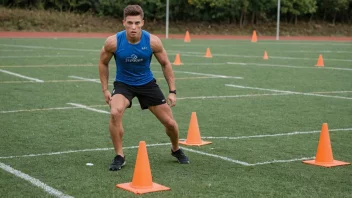The intersection of technology and sports training has opened new avenues for athletes seeking to enhance their performance while prioritizing safety. With the rapid evolution of training technologies, athletes can now utilize tools that not only improve their skills but also monitor their physical well-being. This article delves into how technological innovations are shaping training techniques and fostering a culture of safety in athletics.
One of the most significant advancements in athletic training is the rise of wearable technology. Devices such as fitness trackers, smart clothing, and biometric monitors provide athletes with critical data about their performance and physical condition. These wearables can track heart rates, monitor sleep patterns, and assess recovery, allowing athletes to tailor their training to their current physical state. For instance, a marathon runner can adjust their training intensity based on real-time heart rate data, ensuring they are training effectively without risking fatigue or injury.
Moreover, the use of mobile applications has become increasingly popular among athletes. These apps often incorporate advanced analytics and provide personalized workout plans, allowing users to track their progress and set goals. Many applications also feature community engagement tools, enabling athletes to share experiences and tips. This social aspect encourages a supportive training environment where athletes can motivate one another while being mindful of their safety and wellness.
Another area where technology is making a significant impact is in the field of biomechanics. Motion capture systems and high-speed cameras allow for in-depth analysis of an athlete's movements. By breaking down techniques frame by frame, coaches can identify inefficiencies or improper form that could lead to injuries. This data-driven feedback is invaluable as it empowers athletes to make necessary adjustments in their training, ensuring they perform movements safely and effectively.
In addition to these tools, virtual and augmented reality technologies are emerging as powerful training aids. Athletes can engage in simulated environments that replicate real-world scenarios, providing a safe space to practice critical skills without the fear of injury. For example, a football player can rehearse plays or improve their reaction times in a virtual setting, honing their abilities while minimizing physical risk.
Furthermore, advancements in artificial intelligence are allowing for a more personalized training experience. AI algorithms can analyze individual performance data and suggest modifications to training regimens, recovery strategies, and nutrition plans. This tailored approach ensures that athletes are not only improving their performance but also safeguarding their health by adhering to optimal training loads.
In conclusion, the integration of technology into athletic training has become a fundamental aspect of modern sports. By leveraging innovative tools and techniques, athletes can enhance their performance while maintaining a strong focus on safety. The future of sports training is undoubtedly intertwined with technology, and those who embrace these advancements will find themselves at the forefront of their respective disciplines, equipped with the knowledge and tools to train smarter and safer.
Innovative Tech: A Game Changer for Athletes
Explore how innovative technology is transforming athletic training by enhancing performance and prioritizing safety.






